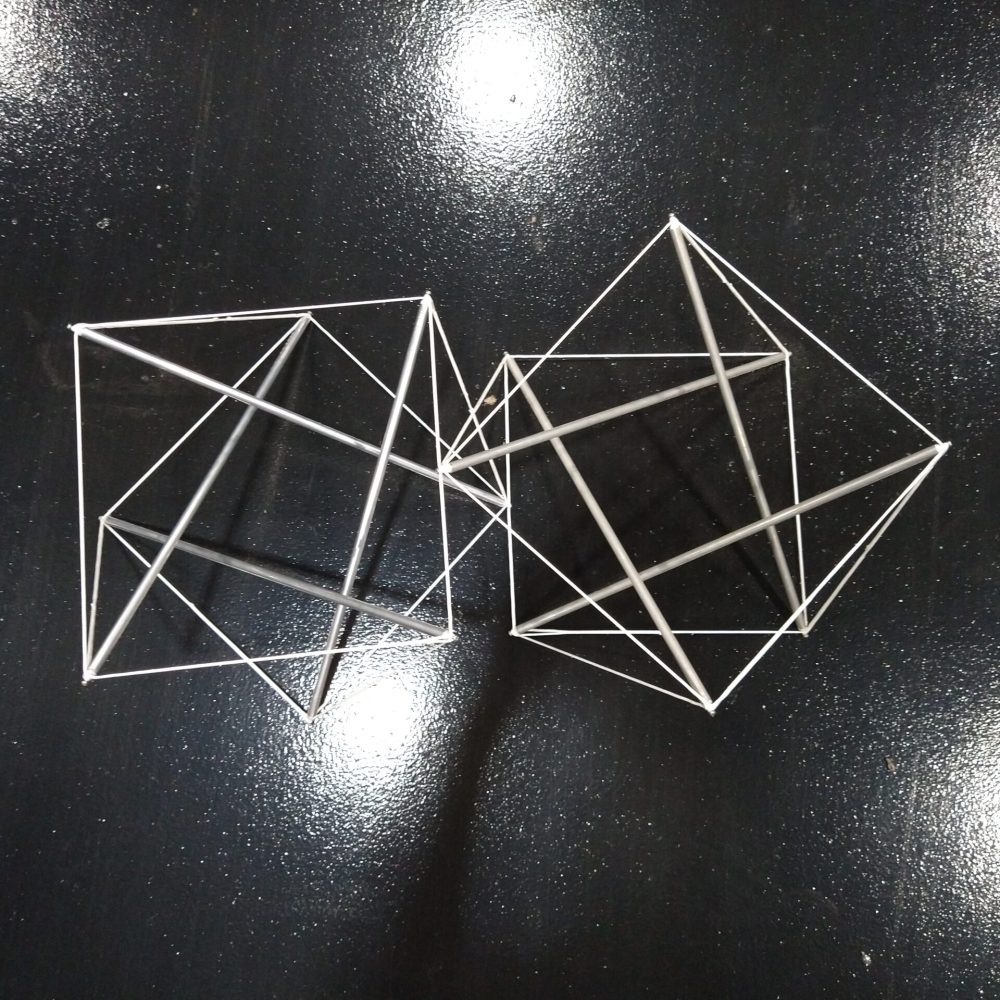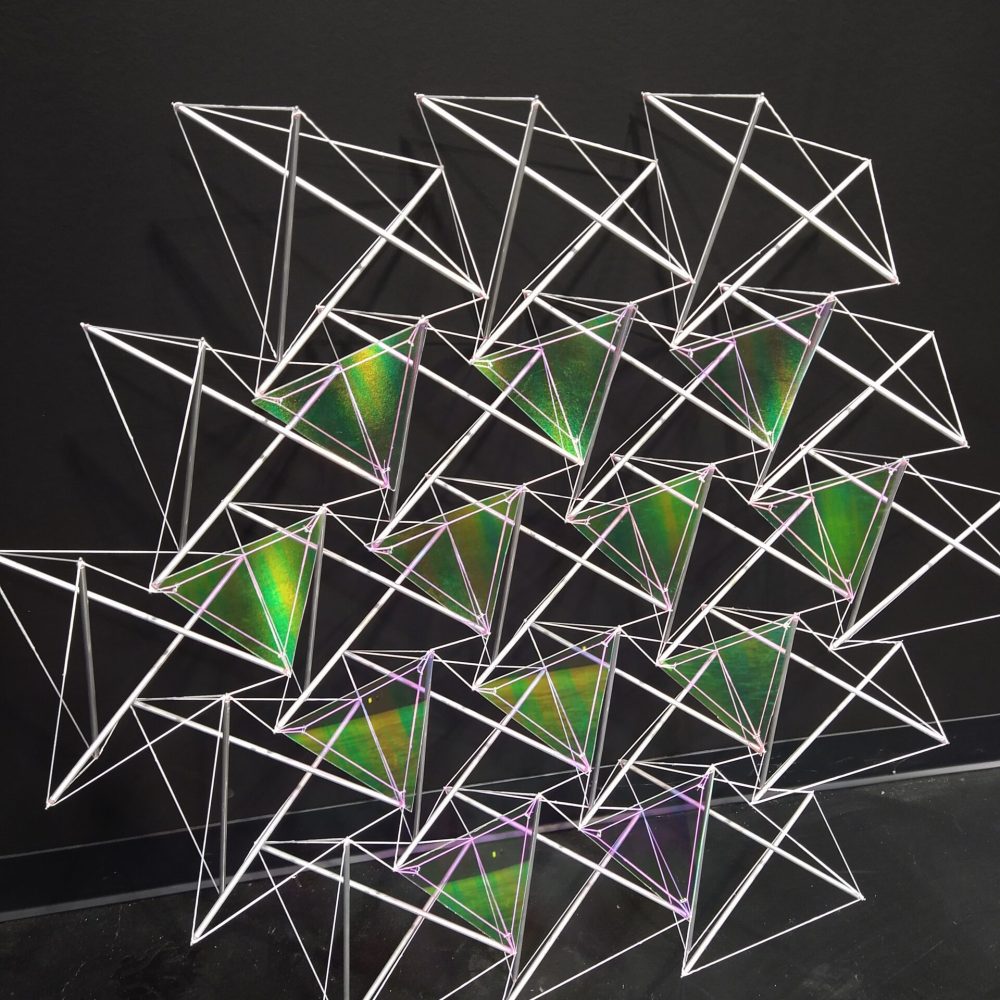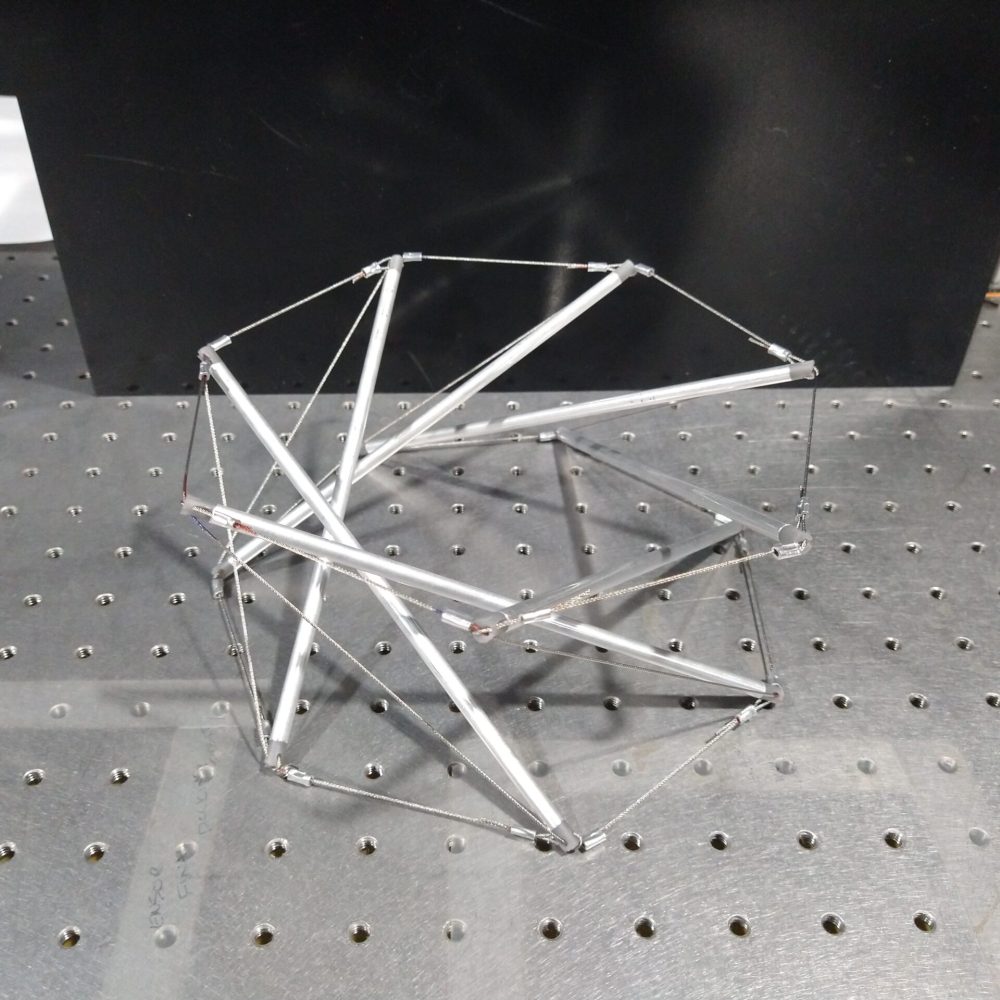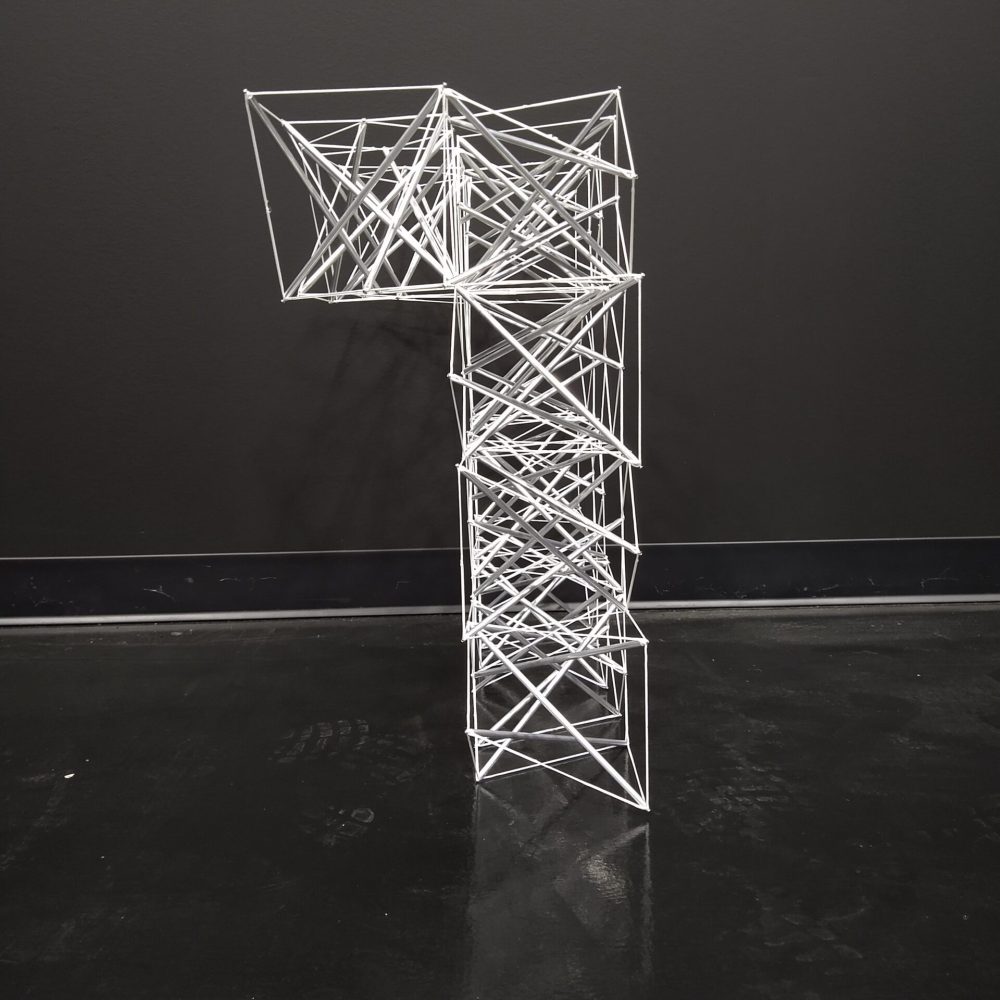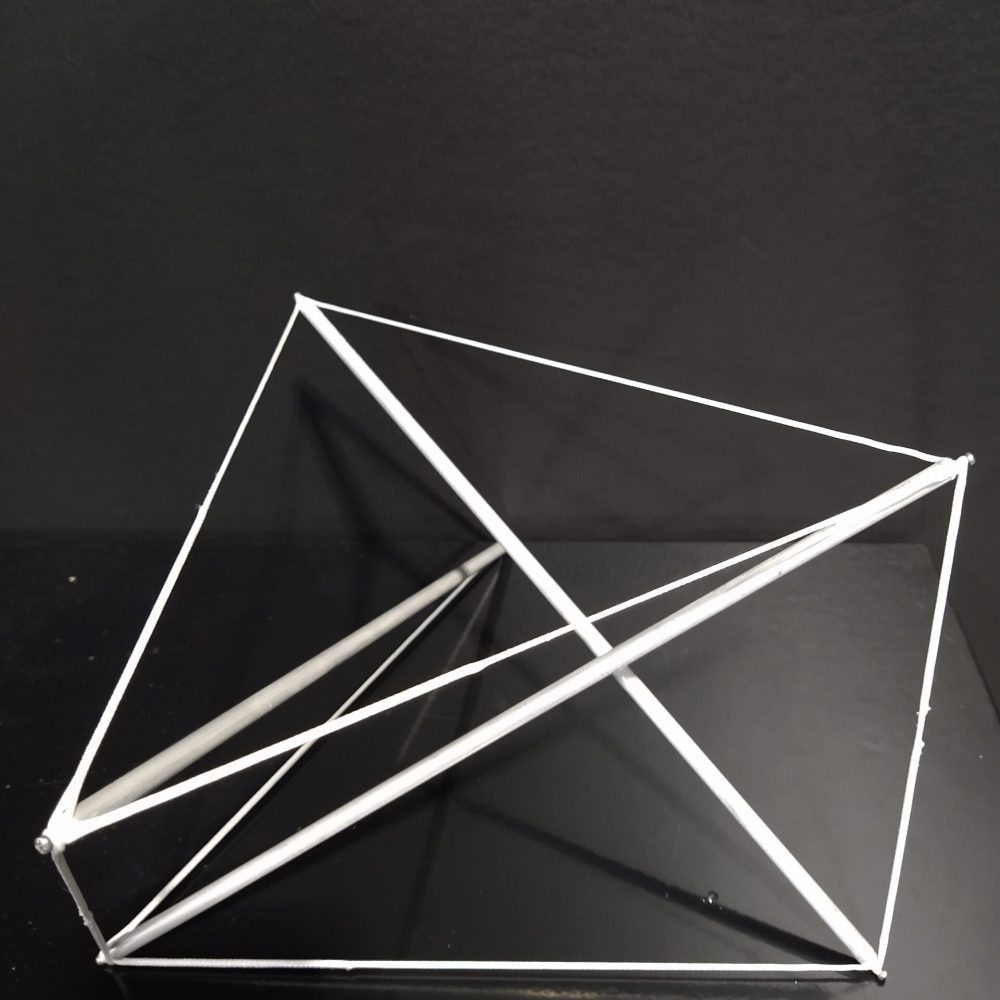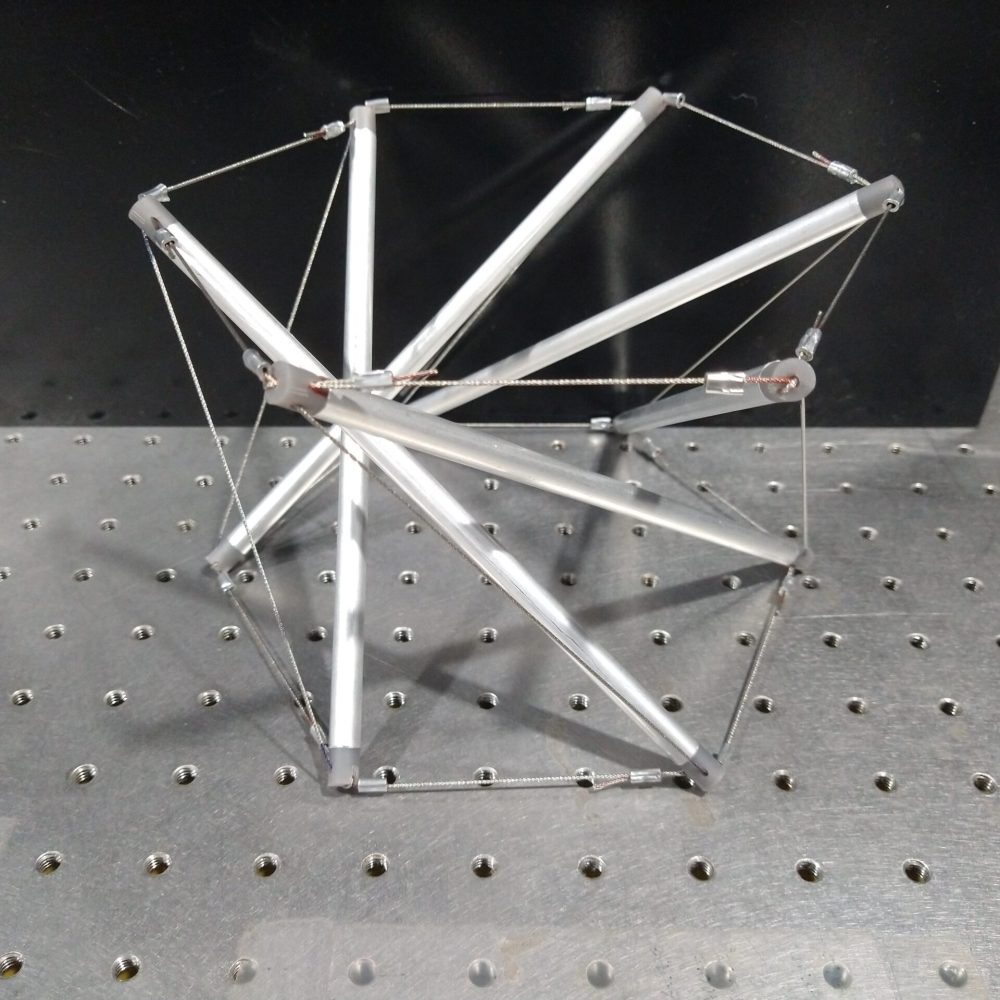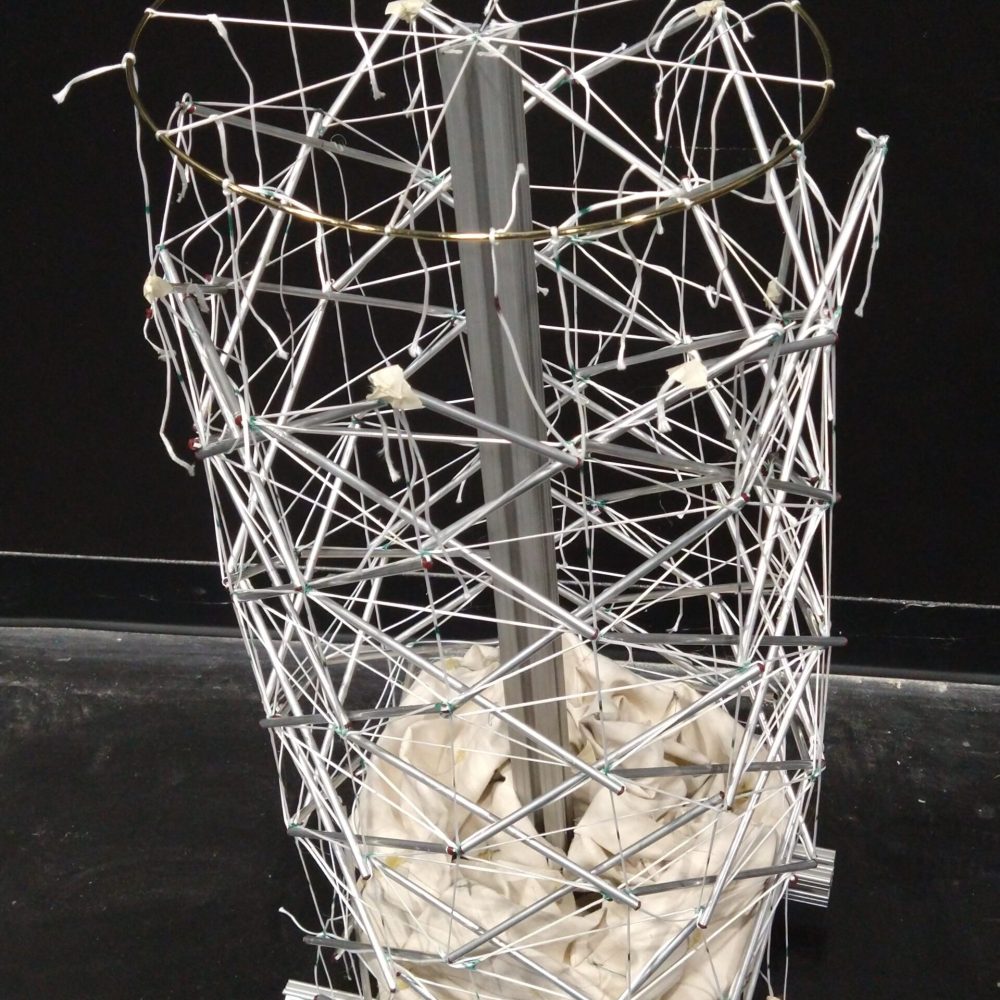Tensegrity
Tensegrity, a portmanteau of “tensile” and “integrity” coined by Buckminster Fuller, is a form of structural design that leverages optimization and symmetry by using only tensile and compressive members. A tensegrity structure, by definition, has only members that take either tension, often referred to as strings, or compression, often referred to as bars. Neither member should take bending moments, as a result of careful design. In this way, greater structures can be designed and optimized by choosing the properties of the individual members, without the difficulties of accounting for torsion. This leads to an accurate model well suited for minimal mass optimization, energy absorption and vibration management, and shape control. It’s often included in studies of soft robotics, truss theory, finite element analysis, and origami. The LASR Lab has primarily focused on the manufacturing process, both manual and automated, but has begun expanding into tensegrity robotics and shape control.
